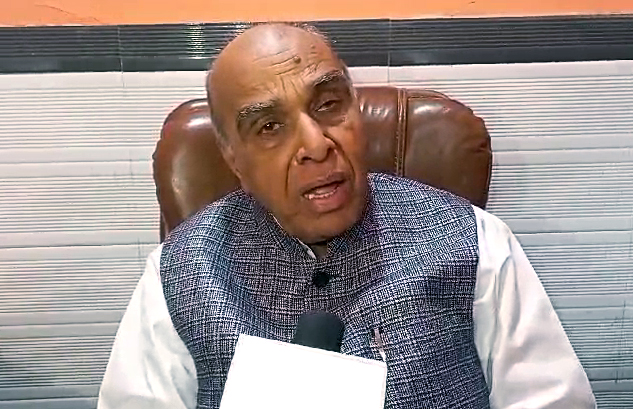As the global fashion industry braces for new green supply-chain regulations, clothing makers in low-income countries like Bangladesh expect major international brands to share the burden.
The European Union’s Corporate Sustainability Due Diligence Directive (CSDDD), adopted in July, requires corporations to make their global value chains more sustainable.
The new rules on workers’ rights and emissions could transform the way clothing is made and sold, most significantly in the garment factories and textile mills across Asia that account for much of the sector’s pollution.
Bangladesh, the world’s second-biggest clothing exporter after China, in particular needs assistance from major brands as it undergoes a political transition following mass protests sparked by a jobs crisis that ousted the previous government.
“While in Bangladesh we have prepared our mindset and ecosystem for the change, we will need support from our global buyers, as well as our government, to reach the green transition goals,” said Abdullah Hil Rakib, managing director at Team Group, a clothing supplier in Bangladesh that employs about 23,000 people.
The CSDDD seeks to bring corporate practices in line with the Paris Agreement on climate goals.
Major European brands must ensure their suppliers are conducting due diligence to protect workers and communities from the adverse effects of their operations or pay compensation for damages.
For the fashion industry, the onus will mostly fall on factories in places like Bangladesh, Pakistan and Cambodia to find and fill the gaps in safeguarding labour, human rights and the environment, experts said.
International brands must collaborate with these suppliers to adhere to the new rules, according to a study by clothing makers in Asia that was supported by the Transformers Foundation, which represents the denim industry, and GIZ FABRIC, a project from German development agency GIZ to support sustainable textile production in the region.
GROWING COMPLEXITY
The new regulations may provide a chance for suppliers to push for ethical commercial practices and more favourable contracts from international brands, representatives from companies behind the study told the Thomson Reuters Foundation in a joint interview.
But manufacturers are still coming to grips with what measures they must take and how they will finance their portion of the estimated $1 trillion investment required for the fashion industry to transition to net-zero emissions in the coming decades.
Rakib estimated that suppliers will have to make additional investments of 20% to 30% to turn their factories green.
Industry experts warned that the CSDDD will require a raft of legal changes in countries where the products are manufactured.
National legislatures will have to pass laws that line up with the EU directive. Brands must devise their approach to implementing such laws, and courts will need precedents in order to enforce them, said Matin Saad Abdullah, a professor of computer science and engineering at BRAC University in Dhaka who maps garment factories’ compliance on labour rights and environmental standards.
“The path forward is long and complex,” he said.
Brands and suppliers have widely differing capacities and plans for meeting what the EU calls “just transition,” said Zahangir Alam, a fashion industry consultant who has worked for three decades with top global brands on labour issues and sustainability.
For example, Sweden’s H&M Group aims to cut carbon emissions by 56% by 2030, while U.S. retailer Walmart’s Project Gigaton seeks to avoid 1 billion metric tonnes of emissions in its global value chain by 2030.
Smaller producers in particular will struggle to determine which actions they need to take to meet a brand’s particular benchmarks, Alam said.
‘SHARED RESPONSIBILITY’
Industry associations and government agencies can encourage a common approach by companies in the transition to cleaner and fairer practices, said Rakib.
Bangladesh’s garment makers’ association, called BGMEA, has set up the Responsible Business Hub to provide information to suppliers about the changing regulatory landscape. The group is also creating a platform to facilitate data collection and sharing.
But suppliers said they need brands at their side too and that meeting the CSDDD’s requirements is a “shared responsibility,” as the directive mandates.
Brands are often accused of passing the buck to their suppliers when it comes to ensuring a living wage or investing in decarbonisation.
To achieve net-zero emission by 2050, the fashion industry will have to invest more than $600 billion to implement solutions that already exist and about $400 billion to develop innovations, according to a report by the Apparel Impact Institute (Aii), a non-profit promoting sustainable investments.
Aii has formed the Fashion Climate Fund, which pools resources from brands and philanthropies, and is working with more than 1,000 suppliers to help them achieve energy and water efficiency, said Lewis Perkins, President of Aii.
Aii acts as a “clearing house” to identify programmes and technology for decarbonisation and encourage local suppliers to adopt them.
“We have identified 1,500 suppliers with high energy usage and aim to support locally grown decarbonisation solutions, when they meet our criteria, prioritised by the suppliers themselves, with buy-in from multiple stakeholders, so that all actors are on the same page,” Perkins said.
WORKERS’ VOICES
The EU directive is also aimed at improving labour conditions, requiring businesses to verify workplace safety and allow workers and unions to file complaints about human rights violations with authorities.
Union leaders said they are waiting to see how the changes are put in place to protect workers.
“When the laws kick in, we need clear and simple channels to seek remedy when anything goes wrong – and the Global North should have a roadmap for supporting the upskilling of workers,” said Kalpona Akter, executive director of the Bangladesh Centre for Workers Solidarity (BCWS).
“Moreover, for all the lawmakers’ focus on transitioning to net zero, there should be a comparable commitment on helping workers deal with climate impacts like flooding and heat,” said Akter.
Garment-producing countries like Bangladesh could lose $66 billion in export revenues by 2030 due to flooding and heat waves, said reports by the Global Labor Institute at Cornell University in the United States and investment manager Schroders published last year.
Team Group’s Rakib said Bangladesh’s experience making changes to improve conditions for workers and the environment make it well-positioned to tackle the new rules – and ensure it retains its position as a leading producer of the world’s clothing.
“With the strides that suppliers in Bangladesh have made in ensuring workers are safe from fire and electrical risks – and more than 200 green factories making extra savings on energy and water – we will remain a key sourcing choice,” Rakib said.
(Reuters)




















